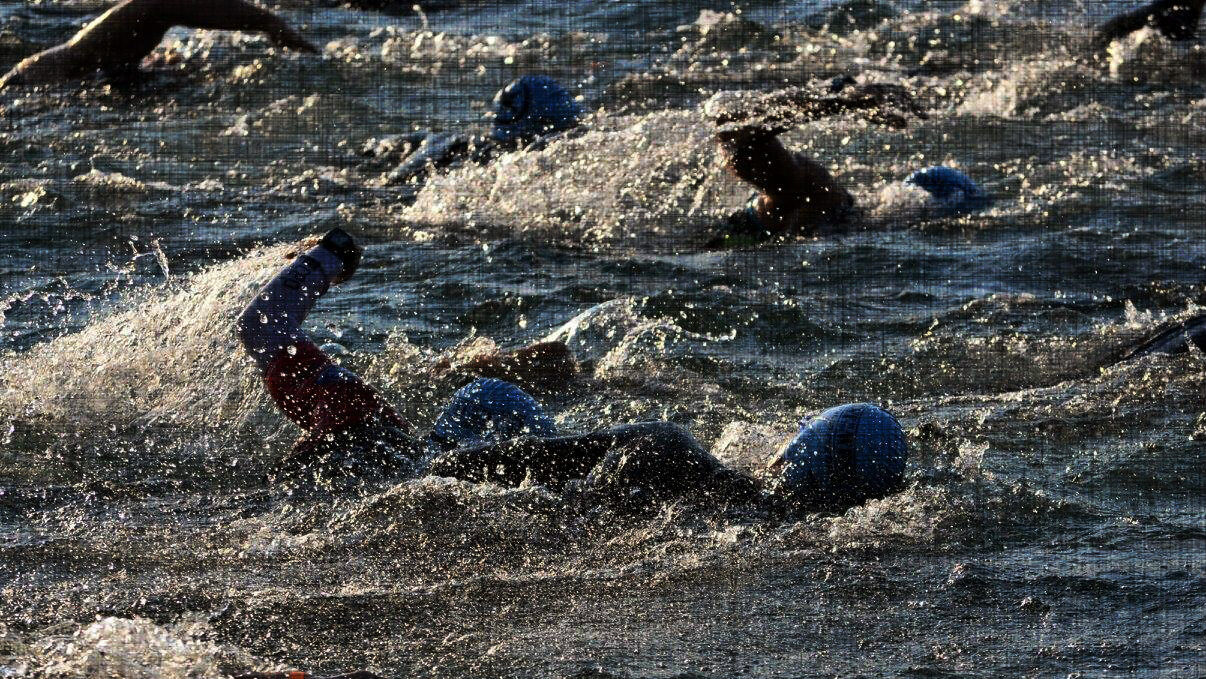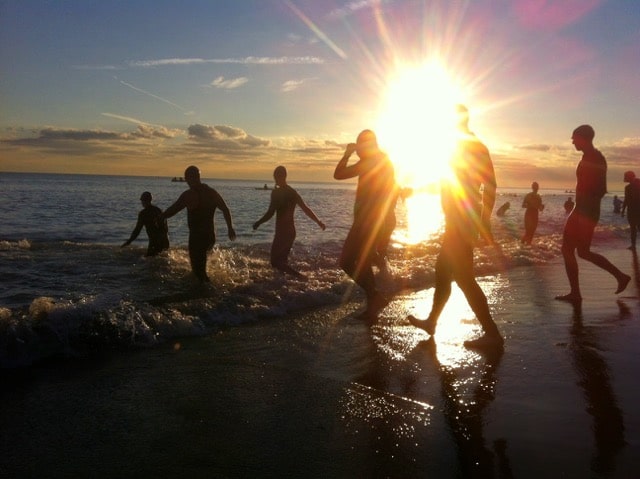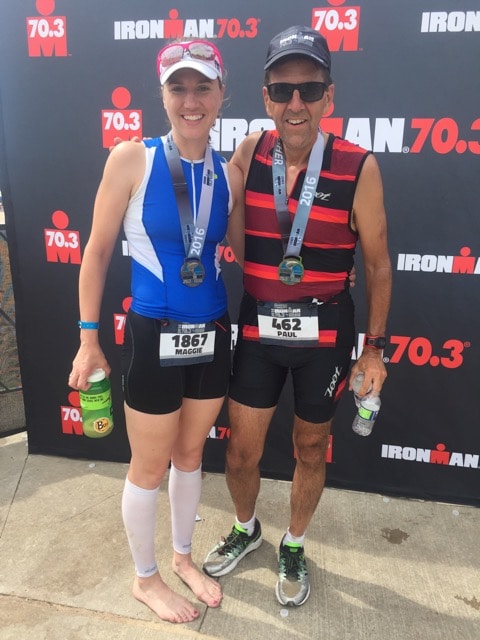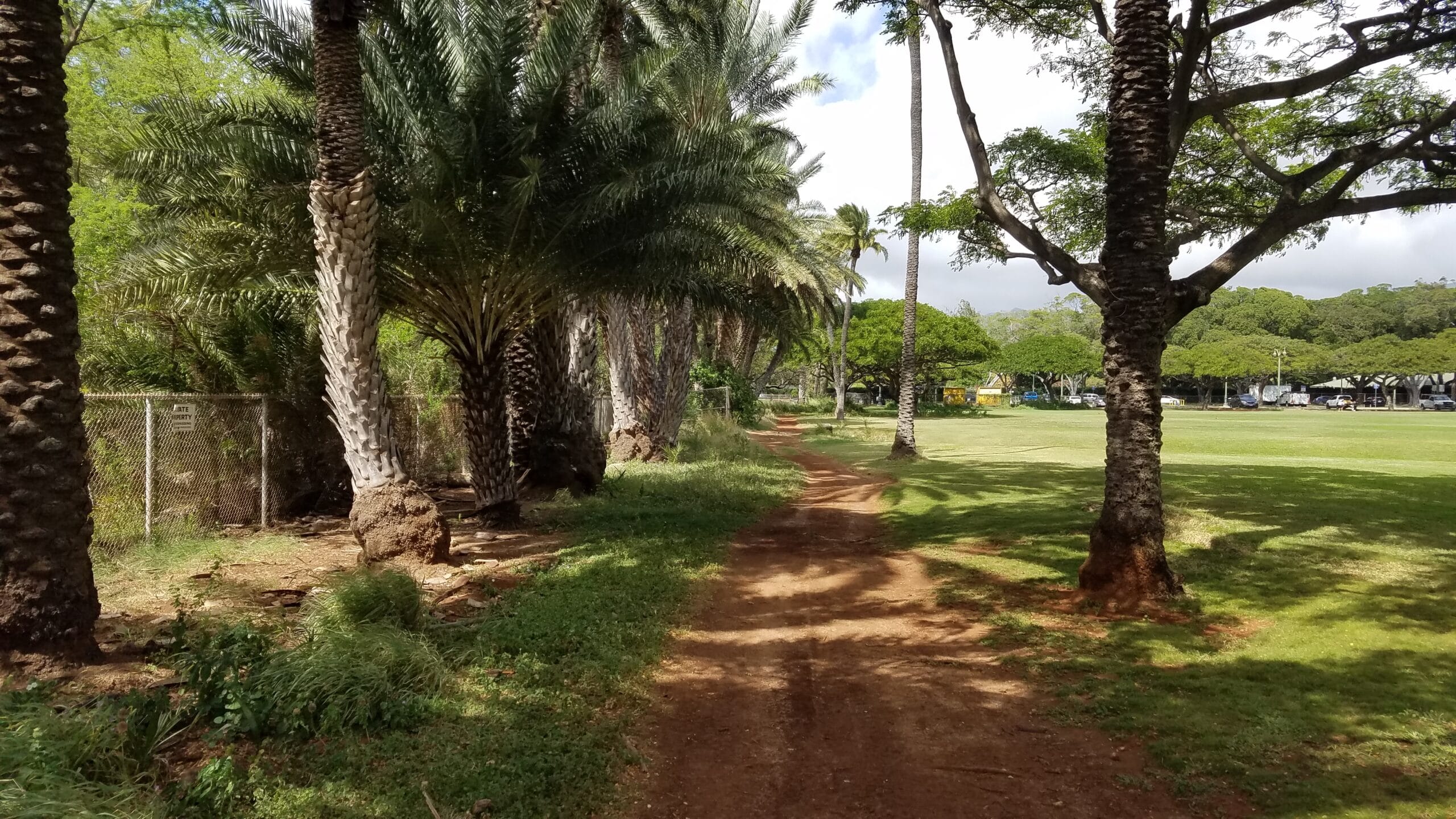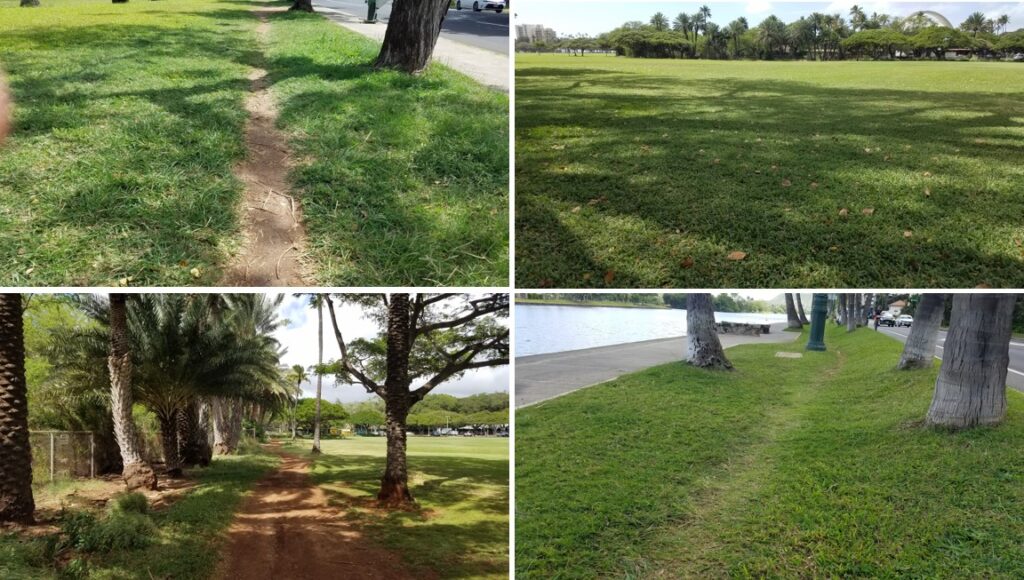Triathlon Across the USA: State #43 – Virginia
Spotsylvania Courthouse, Virginia; May 9, 2021 – Lake Anna State Park, Kinetic Lake Anna Triathlon
Our Route To The Virginia Triathlon
The Virginia triathlon was part of a six-week road trip that included stops in Omaha, Nebraska; The Villages, Florida; and parts of Virginia and Delaware for triathlons in these two states.
Before traveling to Virginia for the Lake Anna Triathlon, Joy and I had spent most of April in The Villages, Florida. During this visit, we joined The Villages Triathlon Club for their April meeting. I also took part in one of the club’s swim sessions.
Lake Anna State Park
Late Saturday afternoon, Joy and I headed toward Lake Anna State Park for packet pickup. The route included a detour into the village of Spotsylvania Courthouse to visit the historic courthouse pictured at the beginning of this post.
We soon arrived at the area in the park next to Lake Anna. At 13,000 acres, Lake Anna is one of the largest freshwater reservoirs in Virginia. The lake is formed by the North Anna Dam on the North Anna River. (I love the name Anna, in part because it belongs to our youngest granddaughter.)
After collecting my race packet, which included a t-shirt, a pair of socks, and race numbers for the bike, bike helmet, and run, we drove the bike course. I do this to check the condition of the roads, looking for potholes or other obstacles that could present a hazard during the race. This is also an opportunity to review the hills and turns along the course.

A Funny Thing Happened On The Way To The Virginia Triathlon
Most of us know that navigation apps can be fickle. I am sure all have experienced at least one occasion of being led astray by them.
On race morning, I left the hotel by myself while it was still dark. Thanks to COVID-19, spectators were discouraged from attending the race, so Joy stayed in the hotel.
I was sure I would have no difficulty getting to the park when the transition area opened at 6 AM. After all, I had driven to Lake Anna State Park only hours earlier.
While it was still very dark, the route seemed familiar, at least parts of it.
So, when the Waze app I was using told me to take a left at Partlow Road, I blindly obeyed. Yes, I made the turn even though I saw a sign for Lake Anna State Park a little beyond the intersection.
I thought “Wonderful. A shortcut. I’ll be there early.”
After about ten minutes on winding roads typical of the area, I passed a small lumber mill that I had passed only minutes earlier. I realized that my ‘shortcut’ was not one at all when I found myself back at the intersection at Partlow Road.
This time, I ignored Waze, followed the Lake Anna State Park sign, and arrived at the park in another 20 minutes. I was a few minutes later than planned. However, I still had plenty of time to get a great position in the transition area for my bike.
16th Annual Kinetic Lake Anna Triathlon
The Lake Anna Triathlon is one of over twenty multi-sport events managed by Kinetic Multisports (Durham, North Carolina). This triathlon has been held every year, except 2020, since 2005.
The advertised distances for the individual legs of this USAT-sanctioned sprint triathlon were:
- Swim: 750 m (820 yards) – Actual: 787 m (861 yards)
- Bike: 15.5 miles (25 km) – Actual: 15.4 miles (24.8 km)
- Run: 3.1 miles (5 km) – Actual: 3.1 miles (5 km)
Actual distances shown above are from my Garmin Forerunner 920XT.
Would It Rain?
I woke to check the temperature on my phone app. It showed 39°F. While I was born and raised in Minnesota, I had just come from an unseasonably warm month in Florida with daily highs in the 80s and 90s.
Then, in the minutes before the start of the race, I heard a young woman, a friend of one triathlete, read from her phone that rain was likely to begin around 8 AM, the start time for the race.
It remained cloudy for most of the race, which meant we did not fight with looking into the sun. However, it never rained.
Last Minute Activities – National Anthem and Quick Practice Swim
Just before the transition area was officially closed, race announcer Jill Blankenburg led us in an outstanding rendition of the National Anthem.
The race director then asked swimmers to gather on the beach for the swim start. Before the start, however, organizers gave those of us who wished to get into the water time to do so.
I always take advantage of this quick warm-up for two reasons. First, I like to know the condition of the beach. Will I be running into water with sharp rocks, weeds, muck, or a solid but irregular bottom?
With this short swim, I learned that Lake Anna is hands-down one of the nicest lakes in which I have done a triathlon swim. As the picture below attempts to show, the beach and lake bottom are of sugar sand consistency. Not as white as sugar, but clearly as soft. Besides, I did not see a single weed during the swim.

More Reasons for a Practice Swim
A second reason for taking advantage of the practice swim is to get my heart rate up a bit. Doing so at this point makes it much less likely that my heart rate will spike during the first minutes of the race when excitement can drive me to swim faster than normal.
There is a third reason for doing the practice swim. I like to get the shock of cold water entering my wetsuit out of the way. When, shortly thereafter, I start the swim, my wetsuit is filled with water warmed by my body heat.
Today, this was especially relevant. The official water temperature was 68°F, making me glad to have a full wetsuit. Still, there were many with sleeveless wetsuits. There were even some more hearty souls who braved the water in just a triathlon suit. To top it off, a couple of guys, one who had to be close to my age, did the swim in only a swimming suit and no shirt.
Swim
After the time allotted for the practice swim, racers gathered behind the ‘Swim Start’ arch. Once the air horn sounded and the first competitor crossed the timing mat and entered the water, another swimmer entered the water about every five seconds.
This ‘time trial’ start is one positive effect of COVID-19. It reduces the density of swimmers in the water and, therefore, reduces, though not eliminates, contact between swimmers.
After swimming in a straight line out to the furthest buoy on the left side of the course, across those at the end, and straight back into shore, always keeping to the left of the buoys, I reached land. In crossing a timing mat on the shore, the swim leg was complete.
Bike
The temperature at the start of the bike leg was 46°F. Because of this, I put on a light, long-sleeved shirt for the ride.
The bike course reminded me a lot of the course for the Ohio triathlon – hilly with enough variety in the scenery to make the ride interesting.
The course followed the road out of the park, then turned left, heading northwest on the smooth, tree-lined Lawyer’s Road.
At mile 5, the course began an equilateral triangle-shaped loop covering another 5 miles of hills and turns. It was during this portion of the course that we passed farming areas with horses and cattle. There were even two Christmas tree farms – Belmont and Ralph’s – on the stretch furthest away from the park.
We soon rejoined Lawyer’s Road and returned to the transition area on the side opposite the one on which we had ridden a few minutes earlier.
A big thanks goes to the race crew and volunteers who did a tremendous job of directing bikers and controlling car and truck traffic with whom we shared the road.

Run
By the time I was ready for the run, the air had warmed to 50 °F and the sun was peeking through the clouds. I shed the long sleeve shirt for a pleasantly cool run, all within the park.
As advertised, the run course included “a good uphill coming out of transition”. This hill continued for most of the first mile.
For the next mile and a half, the course covered gradually rolling hills. The last half mile followed a paved walking trail that traveled nearly completely downhill as it guided us toward the lake.
The end of this trail broke out near the beach. From here, we ran the last few hundred feet on grass to the finish line.
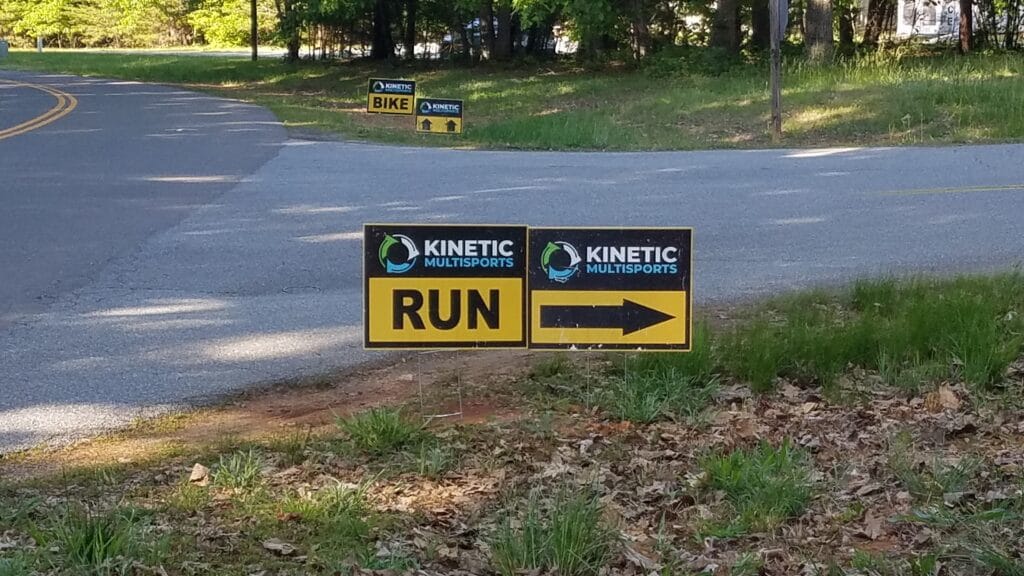
COVID-Style Awards Ceremony
Remember when triathletes gathered to celebrate the accomplishments of fellow racers? When high fives and hand shakes were prolific? Hopefully, we will get these back. I miss the celebrations.
Virtual awards ceremonies miss the point. Was it ever really about the actual award?
For this event, the Kinetic Multisports team creatively took advantage of a natural amphitheater in front of the Lake Anna beach. Rather than dismiss attendees after the race, organizers made use of the hill to reintroduce an award’s ceremony where attendees could both share in the results and stay distanced.
Race Firsts
- First triathlon using my triathlon bike with running shoes and flat pedals having a toe cage, rather than biking shoes and clip-in pedals. I saw this at the Arkansas triathlon shortly before I fell on my bike, because I couldn’t get my bike shoes unclipped quickly enough.
- First race in which I forgot to bring glasses as protection from bugs or other airborne material. Turned out just fine.
Your Favorite Lake For A Triathlon Swim?
What is the nicest lake in which you have done a triathlon swim?
Have you done the Lake Anna triathlon or another triathlon in Virginia?
Tell us about these in the Comments below.
Comments: Please note that I review all comments before they are posted. You will be notified by email when your comment is approved. Even if you do not submit a comment, you may subscribe to be notified when a comment is published.




